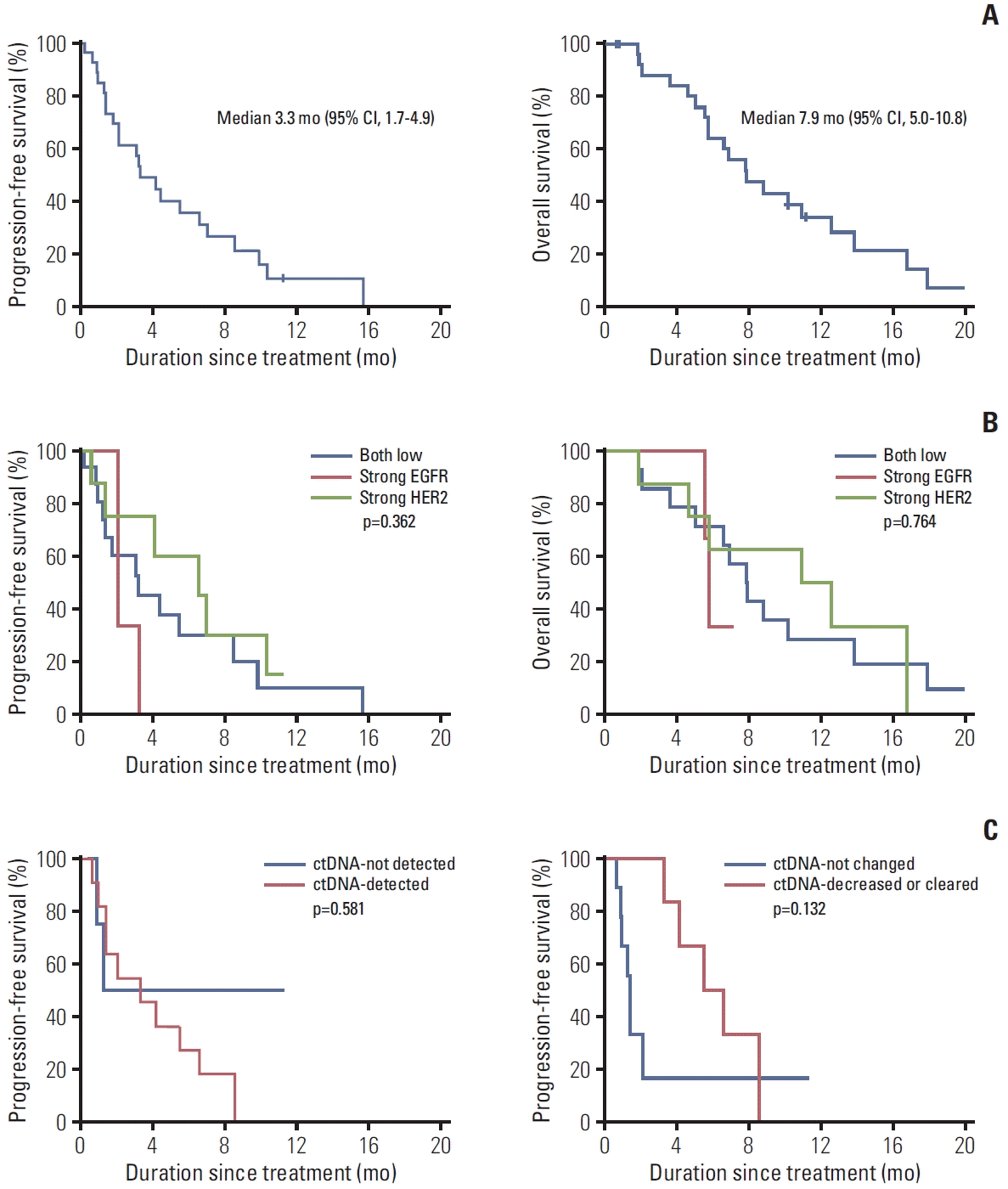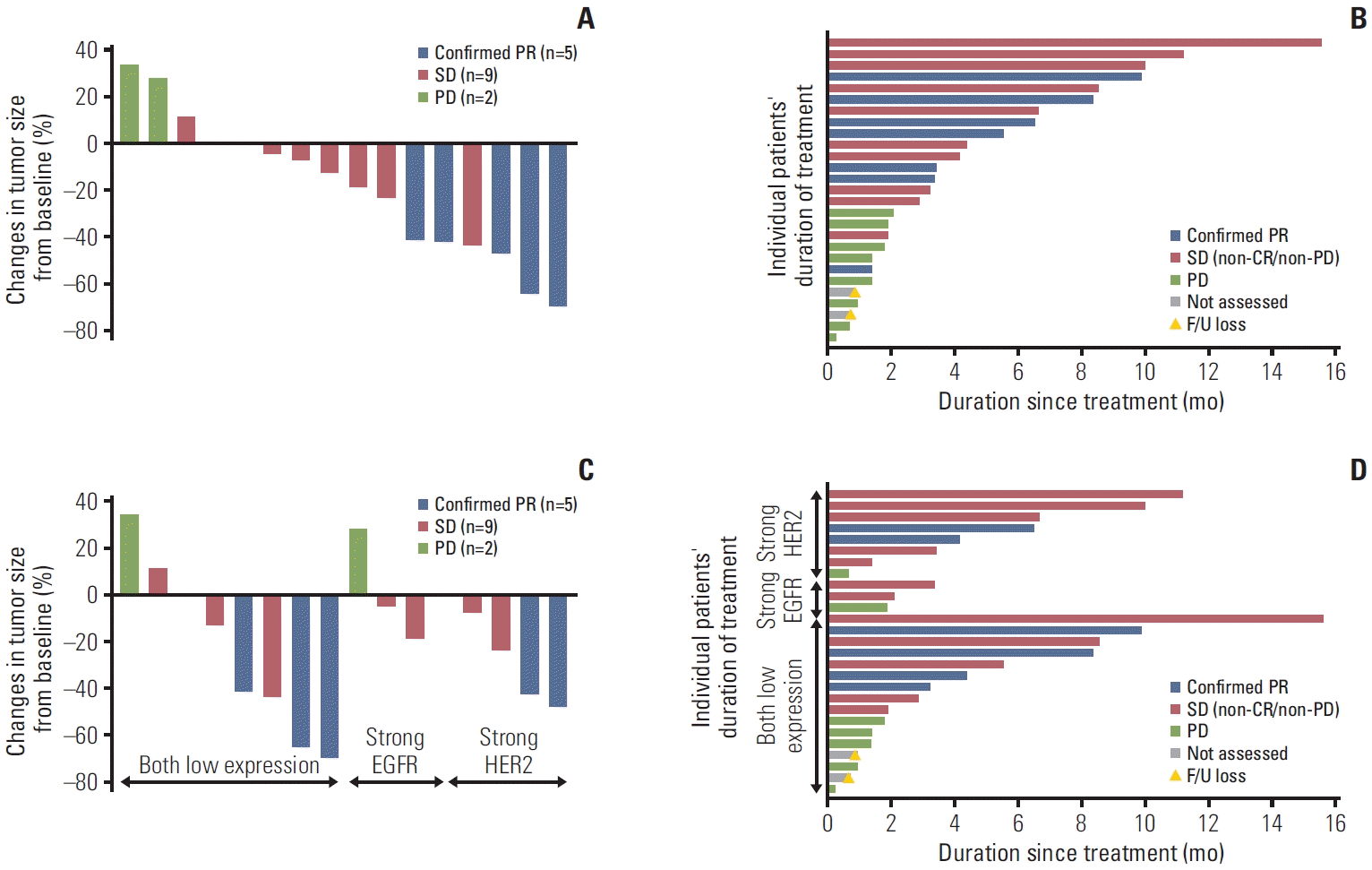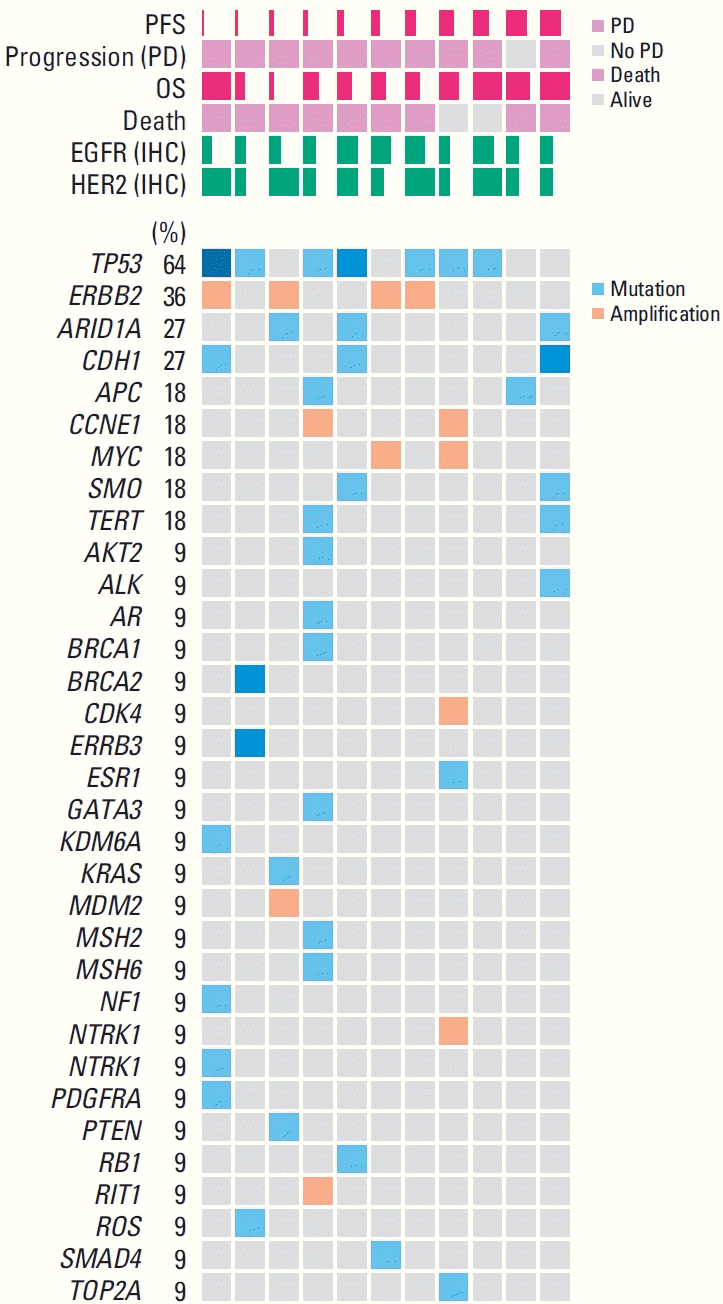Abstract
Purpose
Materials and Methods
Results
Electronic Supplementary Material
Notes
Ethical Statement
This study was conducted in accordance with the Declaration of Helsinki and the International Conference on Harmonization Good Clinical Practice Guidelines. The Institutional Review Board of each participating center approved this study (KCT0003583; NCT05400915). All patients provided written informed consent before enrollment.
Author Contributions
Conceived and designed the analysis: Koo DH, Jung M, Kim YH, Jeung HC, Zang DY, Bae WK, Kim H, Kim HS, Lee CK, Kwon WS, Chung HC, Rha SY.
Collected the data: Koo DH, Jung M, Kim YH, Jeung HC, Zang DY, Bae WK, Kim H, Kim HS, Lee CK, Kwon WS, Chung HC, Rha SY.
Contributed data or analysis tools: Koo DH, Jung M, Kim YH, Jeung HC, Zang DY, Bae WK, Kim H, Kim HS, Lee CK, Kwon WS, Chung HC, Rha SY.
Performed the analysis: Koo DH, Jung M, Rha SY.
Wrote the paper: Koo DH, Jung M, Rha SY.
Conflicts of Interest
Minkyu Jung; Employment: Ensol Biosciences; Stock and Other Ownership Interests: Ensol Biosciences; Honoraria: Lilly, Celltrion.
Yeul Hong Kim; Employment: Yuhan Corporation.
Hyun Cheol Chung; Employment: MDBiolab; Consulting or Advisory Role: Taiho Pharmaceutical, Celltrion, MSD, Lilly, Quintiles, Bristol Myers Squibb, Merck Serono, Gloria Biosciences, Amgen, Zymeworks, Beigene, Y-Biologics, Seagen; Speakers’ Bureau: Merck Serono, Lilly, Foundation Medicine; Research Funding: Lilly (Inst), GlaxoSmithKline (Inst), MSD (Inst), Merck Serono (Inst), Bristol Myers Squibb (Inst), Taiho Pharmaceutical (Inst), Amgen (Inst), Beigene (Inst), Incyte (Inst), Zymeworks (Inst).
Sun Young Rha; Consulting or Advisory Role: MSD Oncology, Daiichi Sankyo, Eisai, LG Chem, Eutilex, Astellas Pharma, Indivumed, AstraZeneca, Ono Pharmaceutical, Amgen; Speakers’ Bureau: Lilly, Eisai, MSD Oncology, BMS/Ono, Amgen, Daiichi, Sankyo/UCB Japan, AstraZeneca; Research Funding: MSD Oncology, Bristol Myers Squibb, Eisai, Roche/Genentech, Aslan Pharmaceuticals, Sillajen, Bayer, Daichii Sankyo, Lilly, AstraZeneca, BeiGene, Zymeworks, Astellas Pharma, Indivumed, Amgen (Inst). Other authors declare no conflict of interest.
ACKNOWLEDGMENTS
References
Fig. 1.

Fig. 2.

Fig. 3.

Table 1.
Values are presented as number (%) unless otherwise indicated. ECOG, Eastern Cooperative Oncology Group; EGFR, epidermal growth factor receptor; FP, fluoropyrimidine and/or platinum; HER2, human epidermal growth factor receptor 2; IHC, immunohistochemistry; ISH, in situ hybridization; MD, moderately differentiated; PD, poorly differentiated; Pmab, pembrolizumab; PS, performance status; SRCC, signet ring cell carcinoma; Tmab, trastuzumab; WD, well differentiated.
Table 2.
Values are presented as number (%) unless otherwise indicated. CI, confidence interval; DCR, disease control rate; EGFR, epidermal growth factor receptor; HER2, human epidermal growth factor receptor 2; NA, not available; ORR, objective response rate; OS, overall survival; PD, disease progression; PFS, progression-free survival; PR, partial response; SD, stable disease.
Table 3.
|
Toxicity grade |
||||||||
|---|---|---|---|---|---|---|---|---|
|
Phase Ib (n=6a)) |
Phase II (n=22) |
Total (n=27) |
||||||
| 1-2 | 3 | 4 | 1-2 | 3 | 4 | All | 3-4 | |
| Hematologic adverse events | ||||||||
| Neutropenia | 0 | 2 (33.3) | 1 (16.7) | 3 (13.6) | 3 (13.6) | 5 (22.7) | 14 (51.8) | 6 (22.2) |
| Thrombocytopenia | 0 | 0 | 0 | 0 | 0 | 0 | 0 | 0 |
| Anemia | 0 | 0 | 0 | 2 (13.6) | 1 (4.5) | 0 | 3 (11.1) | 1 (3.7) |
| Febrile neutropenia | 0 | 0 | 0 | 0 | 1 (4.5) | 1 (4.5) | 2 (7.4) | 2 (7.4) |
| Hyperbilirubinemia | 0 | 0 | 1 (16.7) | 1 (4.5) | 1 (4.5) | 0 | 3 (11.1) | 2 (11.1) |
| ALT increased | 0 | 0 | 1 (16.7) | 4 (18.2) | 1 (4.5) | 0 | 6 (22.2) | 2 (7.4) |
| AST increased | 0 | 0 | 1 (16.7) | 3 (13.6) | 1 (4.5) | 1 (4.5) | 6 (22.2) | 3 (11.1) |
| Hyperkalemia | 0 | 0 | 0 | 0 | 1 (4.5) | 0 | 1 (3.7) | 1 (3.7) |
| Hypokalemia | 0 | 0 | 0 | 0 | 1 (4.5) | 0 | 1 (3.7) | 1 (3.7) |
| Hypophosphatemia | 0 | 0 | 0 | 2 (9.1) | 0 | 0 | 2 (7.4) | 0 |
| Hypothyroidism | 0 | 0 | 0 | 0 | 1 (4.5) | 0 | 1 (3.7) | 1 (3.7) |
| Hyperglycemia | 0 | 0 | 0 | 1 (4.5) | 0 | 0 | 1 (3.7) | 0 |
| Creatinine elevation | 0 | 0 | 0 | 1 (4.5) | 0 | 0 | 1 (3.7) | 0 |
| Non-hematologic adverse events | ||||||||
| Peripheral neuropathy | 1 (16.7) | 0 | 0 | 3 (13.6) | 0 | 0 | 4 (14.8) | 0 |
| Rash | 0 | 1 (16.7) | 0 | 2 (9.1) | 0 | 0 | 3 (11.1) | 1 (3.7) |
| Acneiform eruption | 0 | 0 | 0 | 1 (4.5) | 0 | 0 | 1 (3.7) | 0 |
| Folliculitis | 0 | 0 | 0 | 1 (4.5) | 0 | 0 | 1 (3.7) | 0 |
| Pruritis | 0 | 0 | 0 | 2 (9.1) | 0 | 0 | 2 (7.4) | 0 |
| Anorexia | 0 | 0 | 0 | 0 | 1 (4.5) | 0 | 1 (3.7) | 1 (3.7) |
| Nausea | 0 | 0 | 0 | 4 (18.2) | 1 (4.5) | 0 | 5 (18.5) | 1 (3.7) |
| Vomiting | 1 (16.7) | 0 | 0 | 2 (9.1) | 0 | 0 | 3 (11.1) | 0 |
| Diarrhea | 0 | 0 | 0 | 6 (27.3) | 0 | 0 | 6 (27.3) | 0 |
| Constipation | 0 | 0 | 0 | 1 (4.5) | 0 | 0 | 1 (3.7) | 0 |
| Mucositis | 0 | 0 | 0 | 4 (18.2) | 0 | 0 | 4 (14.8) | 0 |
| Infection | 2 (33.3) | 0 | 0 | 0 | 0 | 0 | 2 (7.4) | 0 |
| Asthenia | 0 | 0 | 0 | 1 (4.5) | 0 | 0 | 1 (3.7) | 0 |
| Myalgia | 0 | 0 | 0 | 2 (9.1) | 0 | 0 | 2 (7.4) | 0 |




 PDF
PDF Citation
Citation Print
Print



 XML Download
XML Download